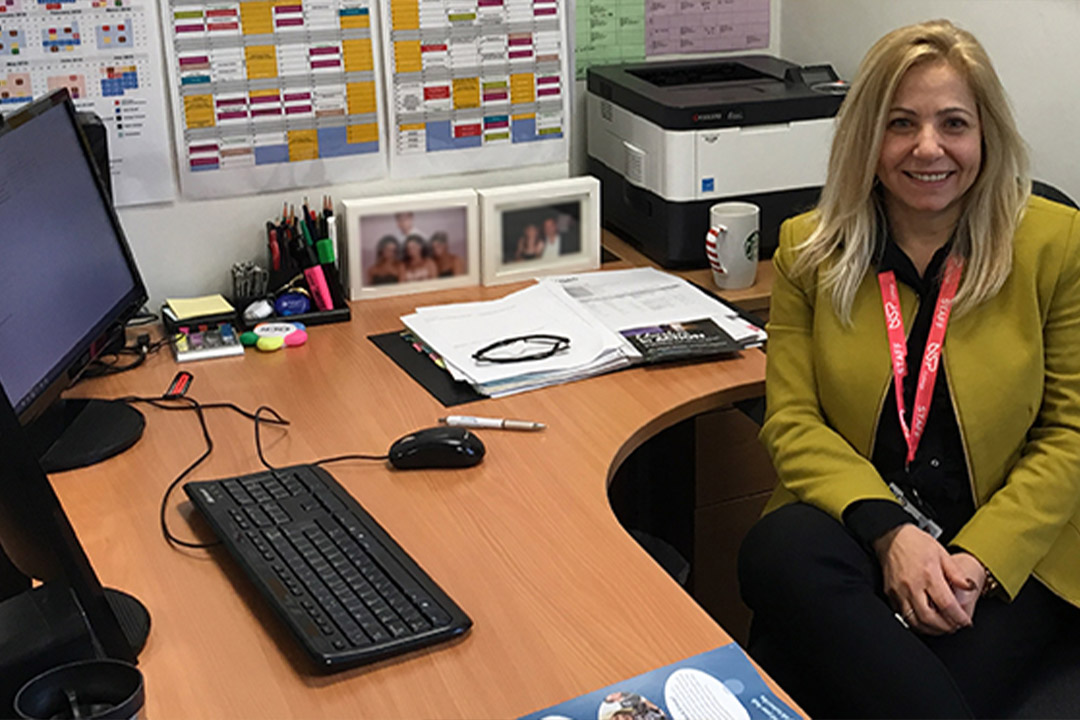How to get students taking Core Maths
We visited USP College in Essex to find out their six steps to effective enrolment in Core Maths
15/03/2019

At USP College in Essex, Core Maths is popular and successful. Based at the Palmer’s College campus in Grays, Head of Maths Seval Fadil has secured four Core Maths classes this year. There are 69 students opting for the qualification, up from 49 in 2017/18. Core Maths also delivers results at Palmer's, with a Value Added score of 0.69 in 2018.
From September 2019, schools and colleges like USP will be able to access the 16 to 19 Funding: Advanced Maths Premium.This payment of £600 per additional student on Level 3 maths courses means that Core Maths makes financial as well as academic sense.
How does the college enrol students onto the course? And what makes it so successful? Here are their six steps for effective enrolment.
1. Speak to students
All students who apply to USP College (Palmer’s Campus) have at least one pre-enrolment conversation with a member of staff, and maths teachers are available to answer any questions. Whatever students want to study at A level or BTEC, a maths teacher will let them know about the benefits of Core Maths.
These conversations start in September of Year 11, catching students early as they make their choices. The conversations continue throughout the academic year. Those taking Business Studies, Science courses and Humanities subjects are often most suited to Core Maths. However, students interested in arts subjects also learn why Core Maths might be for them.
2. Promote the benefits
Conversations centre around the benefits of Core Maths for employability. Enrolment at the college is focused on career pathways – and students learn how Core Maths is useful across a wide range of careers.
Maths teachers make it clear that Core Maths suits almost all students. It is suitable for those who love maths but don’t meet USP College’s criteria for A level Maths (a grade 7 at GCSE). It also works for those who don’t want to study the A level, but who achieved a grade 4 or above at GCSE.
3. Timetable it carefully
Students can study Core Maths alongside any combination of three other Level 3 courses. It is timetabled in three of the six subject blocks that students can pick from, so is flexible.
This flexibility reinforces the conversations teachers have before enrolment. The timetable design shows that Core Maths works with, and can be studied alongside, any other subject combination.
4. Train the teachers
Seval requires that her department are well-qualified. All teachers at USP College (Palmer’s Campus) have a maths or maths-related degree. They are passionate about the subject. They are also experts in Core Maths and the reasons to study it, having researched its popularity with universities.
Training and support for the department is important too. Weekly team meetings start with sharing best practice. Seval also runs a regular subject CPD session for her team.
5. Focus the students
The Core Maths course is taught over one year. Students work towards being examined at the end of Year 12 and so maintain a dedicated mindset. And they have a ‘banked’ qualification to show to prospective universities.
The focus that Core Maths gives students is beneficial. Taking 3.5 subjects promotes time management. It also eliminates ‘free’ lessons, which students can waste.
6. Appeal to everyone
At USP College (Palmer’s Campus), Core Maths classes benefit from a 50/50 gender split. Maths is not seen as a subject aimed at boys. Seval and her team encourage all students to see how and why Core Maths works for them.
Core Maths results also convince students to take the course. In 2018, the pass rate was 96% at A*–E and Alps scores were extremely positive.
If you are interested in learning more about Core Maths and its benefits, we have plenty of information and support for you.
Check out Charlie Stripp’s blog post about the importance of Core Maths. Read our article on how one secondary school has embedded it in the curriculum. There are also some great activities for you to use in lessons.
Don’t forget that you can access plenty of CPD for Core Maths. Contact your local Maths Hub or the AMSP to find out more.